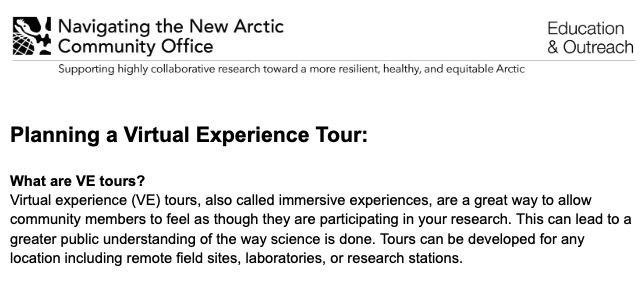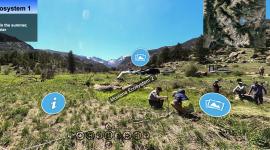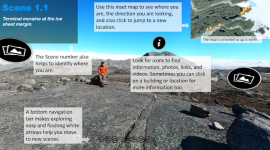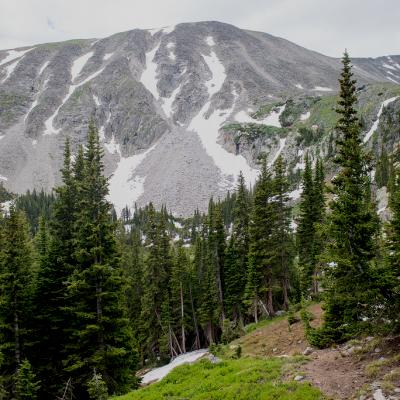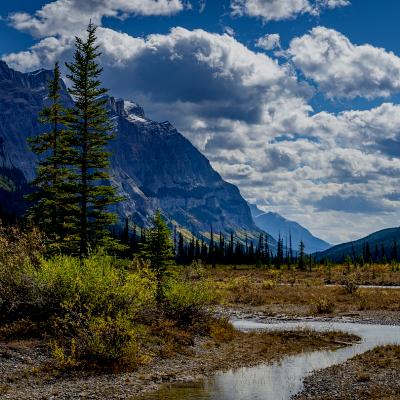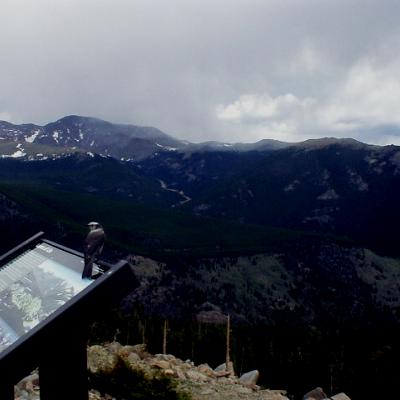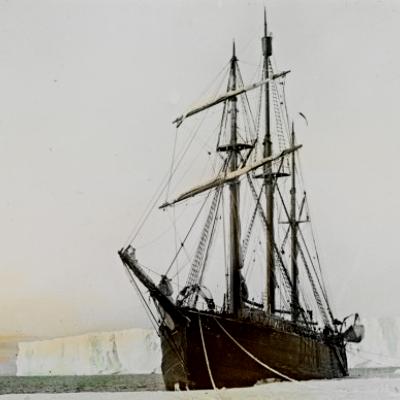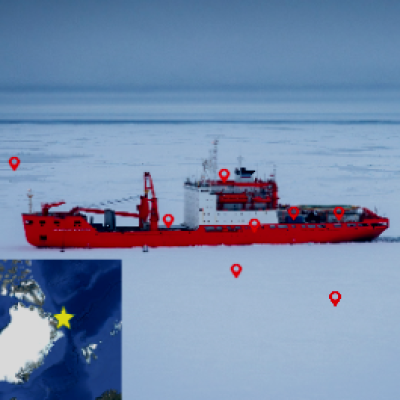Creating Virtual Field Trips
Explore the world around you with CEEE’s virtual field trips and discover how immersive experiences with maps, videos, and interactive content can enrich learning and storytelling inside the classroom and beyond.
Virtual field trips or immersive experiences allow scientists to bring learners along to exciting places such as the edge of the Greenland Ice Sheet or measure snow depth at Rocky Mountain Biological Laboratory. Explore how to make your own virtual field trips using maps, video, sound, pictures, text, and even graphs to immerse others in a remote place. Virtual tours are effective way for scientists to share their work, for teachers to provide engaging learning activities for students, or for students to create and share their own experiences and stories.
Whoever you are, CEEE has compiled resources to get you started creating and using virtual tours.
Guidebooks for Planning, Filming, and Using Virtual Field Trips
Virtual Experience tours or Immersive Experiences offer a way to virtually participate in research across various locations, like remote field sites and laboratories. They include interactive elements such as text, photos, sounds, and videos, tailored to specific goals.
Learn how to plan a virtual field trip, define your tour’s objective, create a storyboard (template and example provided in the guide), and film scenes.

CEEE has developed a comprehensive guide for collecting 360° footage with GoPro and InstaX equipment for Virtual Field Trips or immersive experiences. The guide includes recommended equipment, filming techniques, and storage solutions. It covers the use of 360° cameras and tips for capturing stable, engaging footage, emphasizing the importance of logging footage and using time-lapse to enhance the viewer’s experience. Click the document below for the full guide.
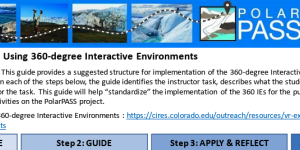
Develop your own tours using this structure for the implementation of the 360-degree interactive or virtual environments in the classroom. The guide identifies the instructor's task, describes what the students will do, and explains the purpose of the task. This guide was developed to “standardize” the implementation of virtual field trips and to ensure consistency across the environments.
Explore the Instructor Guide: sing 360-degree Interactive Environments
Activities with Virtual Field Trips
These CEEE activities include virtual field trips and curricula focused on polar and alpine environments. PolarPASS Interactive Environments uses real data to bring polar science and exploration into the undergraduate classroom. For middle and high school students, the following resources offer lessons on the impact of climate change in different contexts.
Watch the Webinar: Creating Virtual Tours with Infiniscope
In this recorded webinar, Infiniscope by NASA provides training that covers why place-based educational tools are so important for an audience, as well as demonstrates examples of virtual tours from a community-based project in Hawaii and Polar Explorer.

